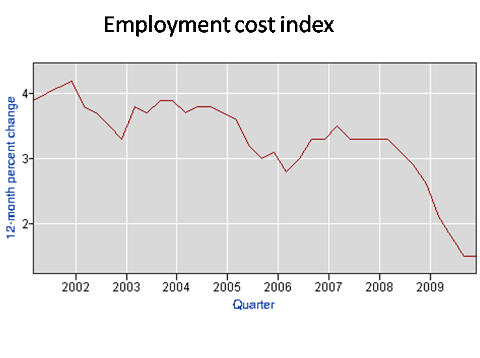March 7, 2010, 4:59 pm Supply, Demand, and Unemployment
Bureau of Labor Statistics
I hear through the grapevine that the usual suspects at the WSJ have put out something along the lines of �Krugman says that unemployment benefits won�t raise unemployment, but in his textbook he says they will, neener neener.� Are they really that stupid? Probably not � but they you think that you, the reader, are that stupid.
But anyway, maybe this is a good time to explain the difference between determinants of the NAIRU � the minimum rate of unemployment consistent with a stable inflation rate � and the determinants of the unemployment rate at a point in time.
So: there are limits to how hot you can run the economy without inflationary problems. This is usually expressed in terms of a non-accelerating-inflation unemployment rate; yes, there are some questions about whether the concept is quite right, especially at very low inflation, but that�s another issue.
Everyone agrees that really generous unemployment benefits, by reducing the incentive to seek jobs, can raise the NAIRU; that is, set limits to how far down you can push unemployment without running into inflation problems.
But in case you haven�t noticed, that�s not the problem constraining job growth in America right now. Wage growth is declining, not rising, and so is overall inflation. A wage-price spiral looks like a distant dream....snip...
http://krugman.blogs.nytimes.com/2010/03/07/supply-demand-and-unemployment/